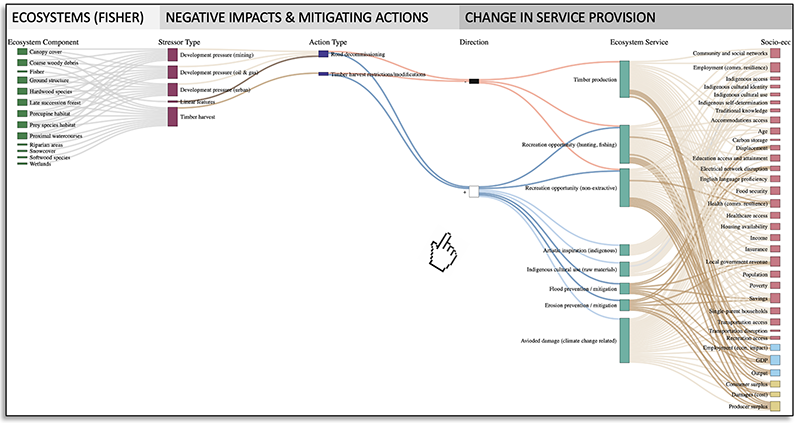Improving socio-economic and environmental assessment for forest stewardship
Photo credit: The Pacific Fisher by the USDA Pacific Southwest Forest Service licensed under CC BY-SA 2.0
Project Details
Location: |
BC, 54.85392, -124.43387 | |
Client: |
BC Ministry of Environment and Climate Change Strategy | |
Duration: |
January 2022 – June 2022 | |
Team Member(s): |
Cedar Morton, Don Robinson, Ryan Trenholm, Jeff Wilson | |
Practice Area(s): |
Nature Based Solutions | |
Services Employed: |
Decision support systems, Natural asset planning and decision-making, Ecosystem restoration and planning, Economic assessment |
The Problem We Aimed to Solve
The province of British Columbia sought support in improving Socio-economic and Environmental Assessments (SEEAs) by combining more traditional socio-economic metrics like jobs and Gross Domestic Product (GDP) with other metrics that better reflect the impact of forest management alternatives on the wellbeing of British Columbians.
How We Helped
To focus the study, we relied on the case of fisher (Pekania pennanti) stewardship in British Columbia. We extended the existing British Columbia socio-economic and environmental assessment (SEEA) guidelines by 1) articulating what socio-ecological relationships analysts should consider when attempting to quantify socio-economic metrics for SEEA, and 2) providing guidance about how to quantify both the biophysical and socio-economic dimensions of selected impact chains. To accomplish these goals, we used an “impact chain” approach that traced through from ecosystem components, to stressors, to candidate management actions, to ecosystem services, and to socio-economic metrics. The resulting impact chain database permits users to identify which socio-economic metrics are relevant to monitor and evaluate given candidate management actions and combines concepts of economic impact, economic welfare, and community resilience into a more comprehensive suite of indicators.
Our Project’s Impacts
Our project was part of a broader effort by the BC Ministry of Environment and Climate Change Strategy to operationalize the combination of economic impact, economic welfare and community resilience indicators in Socio-economic and Environmental Assessments. We have extended this work during ESSA’s other efforts to support the BC Forest Landscape Planning Process.
-
Project report not publicly available


